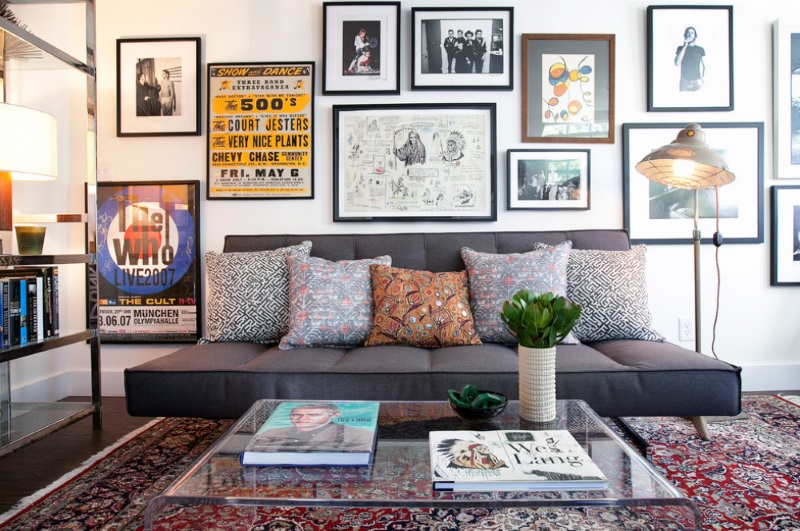image: DECOIST.COM
When I left for college, my dad gave me a garden trowel and engraved a quote upon its shiny, new blade: “To plan for our future, we must discover our past.”
With new tool in hand, I systematically dug my way through field school, searching for all of the answers. Together, we unearthed caches of primitive artifacts and smoothed the stratus on walls of centuries-deep trenches. Until one day, it dulled to the point of no longer desiring to be sharpened, and my companion trowel retired from its scientific duties. The Confucian quote, however, stuck with me over the years, and its industrious words continue to inspire and prompt curiosity.
How important is history to us, and does knowing our place in it provide us with a sense of belonging? History gives us our story—not just our personal one, but also that of our families and kindred, our races, and our civilization. It provides a legacy we hand down through generations, just like our precious family possessions and archives.
We all have a past, present, and future, and a well decorated home should be autobiographical, providing a glimpse into where we came from and who we are. What can you do if your home only tells the CliffsNotes of who you are?
Social media sites drive decorating trends, and ideas are everywhere. We should take care to avoiding cookie-cutter interiors that don’t speak to who we really are. Modern, new design is wonderful, but there is room for your family’s antiques, mementos, and treasures. Here are some unique approaches to expressing your human story at home.
1. Access some antiques.
Your grandmother’s pie safe need not be relegated to the attic. If you were lucky enough to inherit valuable pieces, place them proudly. If they’re mostly sentimental, don’t disregard them. Even if they don’t fit your style, think outside the box.
Old chests, tables, and armoires give a kitchen an aged, European feel when sandwiched between new cabinetry or repurposed as pantries and counter spaces. Vintage wardrobes make interesting storage pieces for linens in bathrooms. When mixed in with contemporary furnishings, antiques provide visual tension and add texture and intrigue to a room.
If you haven’t inherited anything of note but want to pepper your home with the past, visit local antique shops and auctions. Don’t just look at furniture. Peruse the chandeliers, lamps, clocks, and books. Buy quality and double-check authenticity.
2. Put history underfoot.
Even the most modern of design looks amazing when anchored by quality, antique rugs. Kids? Pets? No problem. The more beat up, the better. There’s nothing cozier than a rug that has been handed down. Go for threadbare, but leave the stained ones behind.
3. Add venerable textiles.
Imagine different ways to add sentimental material to your décor. Pillows can be made from your grandparents’ fur coats and kilts. A family quilt will charm a wall, and old military jackets up a coat rack’s cool factor. Traditional cloth nods proudly to your family’s homeland. Try adding ethnic patterns and textures to your space. If it makes you happy, hang it, drape it, recover it, or
repurpose it.
4. Embrace vintage baskets and pottery.
These accents are pretty hot in the design world right now, and prices reflect as much. This is another great way to bring in family heritage, as most every culture in the world has its own basket weaving methods and ceramic techniques. If you didn’t inherit and can’t splurge, find well made reproductions.
5. Frame it.
Wine labels, love notes, concert tickets, costume estate jewelry—even your prized Physical Fitness Award from Ronald Reagan—these are all fun things to free from boxes and put behind a frame. Displayed memories prompt fun stories for your guests.
6. Trick out the guest room.
It’s the perfect space to let history shine. Old hats, suitcases, and canes make great props. Family crests embroidered on pillow shams, maps of special places, vacation souvenirs, and old family blankets will make your guests feel at home.
7. Create garden chronicles.
Assimilate meaningful things into your outdoor spaces: architectural remnants and glass, collected family statuary, even a hubcap from your father’s first car. You don’t want to develop a junkyard look, so be judicious. Use pieces that work with your house style, will fair the weather, and have the most personal meaning.
Adding layers of rich and informative historical context is crucial to giving your home a lived-in, interesting vibe. To get started, ask yourself a few questions: What have I experienced in life so far? What treasures do I own that remind me of loved ones and good times? Where do my peoples hail from, and what is my native country known for in the world of design?
Have fun personalizing your home with historical pieces that let the world know who you are. Meld your memories with domestic, far-away touches. Life is about storytelling. There is no greater story to tell than your own, and no better place to tell it than in your home!






